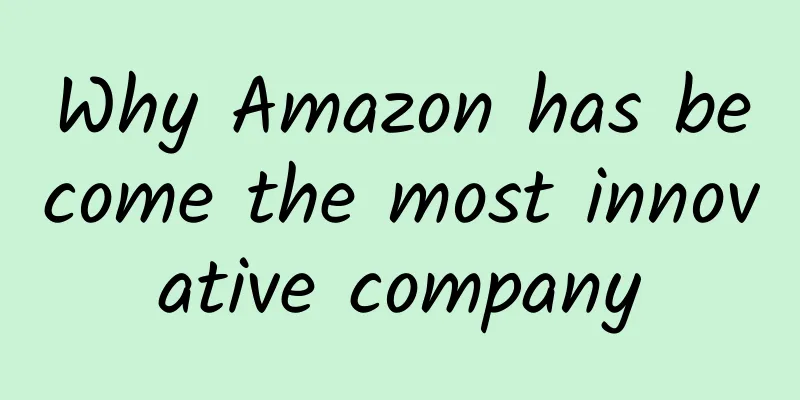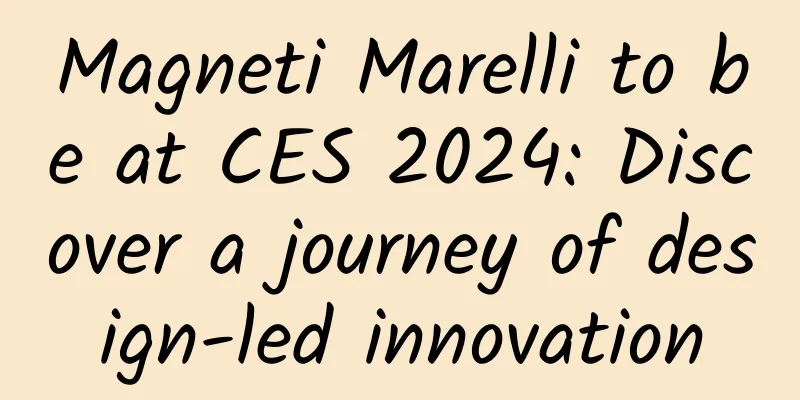Why Amazon has become the most innovative company

|
Imagine: What would the ideal neighborhood look like? Would it be neatly manicured, with buildings arranged in a certain pattern and perfectly designed? Or would it be sandy, natural, with restaurants deep inside where dry cleaners once were? In either case, Amazon packages could be delivered to your doorstep, but for Amazon CEO and founder Bezos, he prefers the latter. “I think neighborhoods, cities, and towns are becoming more interesting and more likeable than they used to be,” Bezos said when I interviewed him at Amazon in Seattle in November. “They were more top-down planned.” In short, they’re more humane. It was a bit surprising to hear Bezos say this, after all, he is a person who strictly adheres to "Six Sigma" and advocates "data decision-making". In the past 22 years, Amazon has entered new territories one after another, constantly changing the landscape, even adjusting the company's existing structure. When the Fire Phone failed, Amazon Echo rose from the flames. Amazon Music Unlimited is a new streaming music service launched by Amazon. It is built on top of Amazon MP3, which was born nine years ago. Amazon Studios has produced a TV series that won an Emmy Award. At the beginning, the TV series was financed by a crowdfunding platform, which was launched in 2010. According to a report by Morgan Stanley, Amazon has become the second largest clothing seller in the United States, and the company's fashion business has begun to take shape. In 2004, Amazon entered the outdoor furniture market, in 2008 it entered the home furnishings market, in 2009 it entered the electronic accessories market, in 2014 it entered the diaper market, and now it also sells coffee. Unlike Apple, Google, and Microsoft, Amazon does not have a sophisticated ecosystem that ties apps and services together. Bezos emphasized that each platform has its own customers and serves its customers in the best and fastest way. He said: "Our customers are loyal until someone provides better service. We like this situation, and it stimulates us to move forward." It is precisely because of this stimulation that Amazon can continue to innovate. Step by step In the past year, Prime Video has covered more than 200 countries and regions. In 2014, Amazon acquired the streaming game video platform Twitch. It recently established a content studio and announced that it would produce three original programs. Amazon also invested in startups that developed voice apps for the smart assistant Alexa to enhance Alexa's functions. In addition, Amazon has built more than 20 order fulfillment centers around the world. It has become the largest online retailer in India and used drones for delivery for the first time in the UK. Bezos' strategy is to keep experimenting, experimenting in adjacent industries. Amazon used to only sell books, but now anyone can open a website on Amazon and sell all kinds of goods. Amazon built warehouses and logistics facilities to sort, pack, and ship books. AWS (Amazon Web Services) has become a big business with annual revenue of $13 billion. Not only Airbnb and Netflix use it, Amazon also uses AWS to store Kindle e-books and drive Alexa. Amazon was selected as the most innovative company by Fast Company mainly because it is very large, but still very agile. In 2017, how will Bezos integrate scale and agility? If you really want to understand, you can look at sales, which were about $100 billion in 2015, and the stock price has increased more than three times in the past five years; then look at the business that Amazon is developing today: first, the Prime business, where you can become a member for $99 a year, and Amazon Prime users are growing rapidly; second, opening physical stores and entering the offline world, which Amazon was reluctant to open before; third, building a logistics system, Amazon built a new logistics center, only an hour's drive from Seattle, which is equipped with high-tech robots, which work with human employees. Mobile first, on-demand services, that's the state of the world today. E-commerce will disrupt the market, and Amazon's founding philosophy is based on this. Mobile first, on-demand services coincide with Amazon's founding philosophy. The impact of Amazon is already huge. In January, the nonprofit organization Local Self-Reliance surveyed 3,000 independent businesses, half of which were retailers, and asked the companies what the biggest threats they faced were. Competition from chains and large supermarkets, health care, finding employees, and rising rents all ranked last. "Competition from Amazon is the biggest concern," said Stacy Mitchell, co-director of Local Self-Reliance. Through decades of twists and turns, surprises, new businesses that are younger, more funded, more enthusiastic, and working harder, Amazon remains the undisputed leader, still essentially a startup, constantly breaking expectations. Along the way, Amazon has reinvented itself. Prime is the core Recently, all of Amazon's innovations seem to be related to Prime. If you count all the goods sold on Amazon, you will find that 60% of them are from Prime services by value. There are between 40 and 50 million Prime users in the United States, and each customer spends an average of $2,500 on Amazon each year, four times more than non-members. If you can make good use of all the membership features of Prime, you can save a lot of money. In the Prime service, millions of products can be delivered for free and arrive in 2 days. There are also hundreds of thousands of products that support Prime Now service, which can be delivered to your home in just 1 hour or even shorter. In addition, Amazon also provides members with 1-hour food delivery service, a free e-book every month, and members can watch Twitch shows without ads. Not only that, Prime members can also purchase discounted products at a discount, such as 20% off diapers and unlimited storage space for photos. For a little more money, Prime can be upgraded to include unlimited audio books, grocery delivery, and an HBO subscription to watch on the Amazon Fire TV streaming media player. Greg Greeley, Amazon Prime's global vice president, said that Amazon added more than 50 "benefits" to Prime members in the second half of 2016 alone. I talked to many Amazon executives and asked them what held it all together, and they all told me that it was the desire to get whatever customers wanted, as quickly as possible. In 2014, when Amazon Vice President Stephenie Landry launched Prime Now, which she oversaw in 7 countries and 49 cities, she explained that she ran a business that solved only two problems: “Do you have what I want, and can you deliver it when I need it?” If you can’t solve these two problems, all other customer experiences are useless. The more products and services Prime provides, the more willing users are to renew their memberships and buy more things. Not only that, Amazon can also collect more data to predict what users will buy next. With information, Amazon can polish new products and services, such as Dash buttons and Alexa, which we can use to shop. Bezos said: "You only need to say one sentence: 'Alexa, reorder the toothpaste.' It will know which toothpaste it is." Because of this, Bezos repeatedly emphasized that Prime is the company's "flywheel". In other words, Prime is the "engine" that continuously supplies energy to the company. On the one hand, Prime drives Amazon to accelerate its progress, and at the same time, Prime benefits from the company's rapid development. Bezos said that in the past 20 years, people have been asking him whether Amazon would open physical stores. His answer is always: "No." Bezos said: "If I have different ideas, I may open physical stores. My answer is basically the same." Now, Amazon has opened 4 concept stores. Why the change? In part, it’s because of Prime, and the allure of physical stores for inexperienced users. Bezos explained that Amazon’s technology is now so sophisticated that in-store shoppers can interact with digital platforms in new ways. Amazon likes to observe the impact of interactions and look for new opportunities. Physical Store The first Amazon stores were somewhat traditional: Last year, Amazon opened more than 30 stores in the United States, displaying Amazon electronic devices, including Kindle, Echo, Fire tablet, and Dash. Then, the number of Amazon Books stores increased from three to eight, displaying books rated higher than four stars, accompanied by reviews from the site's experts. Last December, Amazon announced the launch of "Amazon Go," which is equivalent to a convenience store. Amazon Go will be set up in Seattle in early 2017. At the turnstile of the entrance passage, shoppers can take out their mobile phones and scan the code to get their favorite products; the products will be added to the digital shopping cart, and they will be automatically paid for when they leave, using their existing accounts. In this way, there is no need to draw lines at the exit, nor is there any need to place cash registers. Amazon's cloud computing technology, machine learning technology, voice control technology and logistics technology will do. Amazon has created a technology platform that can be sold to other companies for use. Finally, Amazon has come up with another concept: the grocery store concept. No one inside Amazon wants to talk about this concept, but leaked documents from the construction departments of Seattle, Sunnyvale, and San Carlos in San Francisco show that Amazon is selecting locations for stores in three places. The construction of the Seattle store seems to be almost completed. It was originally a Chinese restaurant on a busy commercial street, which happens to be the Ballard neighborhood and is developing rapidly. The document also talks about a system that appears to be an expansion of the AmazonFresh grocery service: customers can remotely load digital shopping cart information, pay online, and pick up the goods in a physical store within 2 hours. "When consumers shop and pick up their goods, they can drive into the parking area, which has a total of 8 parking spaces, and the purchased goods will be delivered directly to the car, or they can walk into the retail area to pick up the goods themselves," the document said. Many Americans like to buy corn flakes at night, and Amazon stores cannot meet this demand for the time being. Nevertheless, Amazon has been patient and will slowly improve and increase services. AmazonFresh was launched in 2007, and the service has slowly expanded since then, entering dozens of cities. New Fulfillment Center There is a military base in DuPont, Washington. Amazon built an order fulfillment center near the base. From the outside, the center is no different from an ordinary warehouse. There are many trucks around the building waiting to load or unload goods. Only when you enter the interior can you see the world, which can tell us how advanced Amazon's classification, packaging, and delivery technology is. The entire process starts with the "vision tunnel," a conveyor belt that looks like a tent with cameras and scanners all over the dome. When the box is unloaded from the truck, the system takes a picture of the box and scans it from all directions. Amazon then uses image recognition algorithms to sort the packages, such as by product type, size, and weight. In the old order fulfillment center, if employees were asked to scan the goods with a barcode scanner, it might take an hour to complete the work. Now it only takes half the time. The warehouse occupies several million square feet, and boxes are dragged from the dock to the warehouse, and sometimes they are simply hauled by driverless cars. The new facility mainly handles large items, which are shipped by Amazon itself, which is why Amazon installed a huge yellow robot on the main floor, weighing 6 tons. The robot has a 6-axis robotic arm, which can easily lift a car. Most of the time, the robot will lift a pallet with diapers or Keurig cups on it, which is 4 feet high. The robot delivers the goods to the second floor of the warehouse, waiting to be shipped. The robotic arms work constantly, often in conjunction with rolling Amazon robots, which were developed by Kiva Systems, which Amazon acquired for $775 million in 2012 and which only began to be closely integrated into fulfillment centers last year. Once the packages leave the warehouse, they are delivered on Boeing 767s with the "Prime Air" logo emblazoned on the side. Amazon deployed 40 cargo planes last summer, operating them in partnership with two aircraft leasing companies. In January, Amazon said it had built a new air port in Kentucky to support the fleet, where 2,000 employees were housed and $1.49 billion was invested. With the aircraft, Amazon can reduce its reliance on FedEx, DHL, and the U.S. Postal Service. In the future, Amazon will use drones to deliver goods, shortening the delivery time to 30 minutes or even less, but drones have not yet been approved by the FAA. Amazon emphasized that the new automated order fulfillment center requires more employees than the old center because the warehouse stores a lot more goods, so more employees are needed to pack and supervise. The DuPont facility operates 24 hours a day, 7 days a week and has more than 1,000 full-time employees. At loading station 1405, I saw a young man taking items from a yellow robot, scanning them one by one, and putting them into boxes after the computer verified them. During the holiday shopping season at the end of the year, Amazon recruited 120,000 temporary workers in the United States, otherwise it would not be able to meet the demand. This is how American factories will operate in the future. Make the working environment better Amazon's business is not without challenges. In order to increase delivery speed, Amazon's annual shipping costs have exceeded $11 billion. In order to save costs, Amazon has to optimize processes and squeeze employees. At the end of last year, when the holiday shopping season was approaching, pilots of Prime Air transportation contractors went on strike, demanding pay raises and shorter working hours. In 2015, The New York Times published an article about Amazon's harsh working environment. The company is changing. In January, Amazon pledged to create more than 100,000 full-time jobs in the next 18 months, and it is also building a new headquarters in downtown Seattle. When the new headquarters is completed in 2018, it will be three glass-enclosed spheres in the middle, surrounded by five buildings, an auditorium (with 2,000 seats), and more than 3,000 plants and trees from all over the world. The new headquarters has flexible office areas with sofas and an "Expressions Lab" where employees can learn to knit. There is also a small open-air park on one floor for puppies to play, and there are several markets and cafeterias. Amazon has paid for the city to add trams; bicycle lanes lead to the building, which has 1.7 acres of public space. Bezos said: "Our office park is not in the suburbs, which may be the biggest problem. If it were in the suburbs, Amazon would be more vibrant and energetic." In November, Amazon released a video ad featuring elderly friends laughing, hugging, and ordering knee braces for each other, telling a moving story that suggests Amazon is a cultural connector. Just two weeks before the ad was released, Trump was elected president. I asked Bezos what role Amazon played in the polarization of the country. Bezos provided funding for The Washington Post, which actively supported Trump during the campaign. Bezos responded: "I don't think the country is polarized. Everyone wants to get the goods quickly and hope that the price of the goods will be lower. I care about these things. Our job is to give users a better experience. The whole world needs a good experience." Bezos' words are impeccable. Now Amazon is more than just providing toothpaste to users. Bezos said that user dissatisfaction is sacred. This dissatisfaction is the company's North Star. Under his leadership, Amazon has formed a culture of continuous improvement. The neighborhood may have changed, and change may be a good thing, because this is how modern business is formed. As a winner of Toutiao's Qingyun Plan and Baijiahao's Bai+ Plan, the 2019 Baidu Digital Author of the Year, the Baijiahao's Most Popular Author in the Technology Field, the 2019 Sogou Technology and Culture Author, and the 2021 Baijiahao Quarterly Influential Creator, he has won many awards, including the 2013 Sohu Best Industry Media Person, the 2015 China New Media Entrepreneurship Competition Beijing Third Place, the 2015 Guangmang Experience Award, the 2015 China New Media Entrepreneurship Competition Finals Third Place, and the 2018 Baidu Dynamic Annual Powerful Celebrity. |
Recommend
What are the operators doing before the APP is launched?
Nowadays, people tend to divide product operation...
This is how you can attract new users and promote activation of your APP!
In the era of mobile Internet, daily active users...
Whose dopamine is activated? On World Environment Day, let’s protect the beautiful background of the earth together!
Every color on earth has its own unique charm. Th...
Early stars may not have died! They left us a bubble
Scientists discover a supernova that destroyed an...
The Glory and Stupidity of the Three-Star Dynasty
In the past 2016, Samsung was in a quagmire. The ...
What is happening to the Qinghai-Tibet Plateau under the influence of global warming?
The Qinghai-Tibet Plateau is known as the "R...
Smart investment advisors, asset allocation, content marketing…How are financial management platforms transforming in 2017?
After briefly summarizing the background of indus...
What functions does the 400 number have?
There are two main ways for enterprises to handle...
How much does it cost to receive happy birthday wishes from Russian beauties?
Yes, you read it right. A group of Russian girls ...
Behind the prosperity of domestic mobile phone manufacturers is actually a bleak situation
In 2015 and 2016, the development of domestic mob...
Support fingerprint unlocking, perfect combination of Email Master and iOS8
Just touch the Home button of your Apple phone wi...
For the security of your Apple device, please remember to enable the "two-factor authentication" function
Sometimes, having your Apple ID hacked can be as ...
How to build a product operation and promotion system for two-dimensional products?
The analysis in this article is mainly to underst...
Baidu promotion invalid clicks, how to avoid invalid clicks?
Friends who are engaged in Baidu bidding promotio...
How much does it cost to join the Yangzhou Fresh Food Mini Program? Yangzhou Fresh Food Mini Program Franchise Price Inquiry
What is the price for joining the Yangzhou Fresh ...









